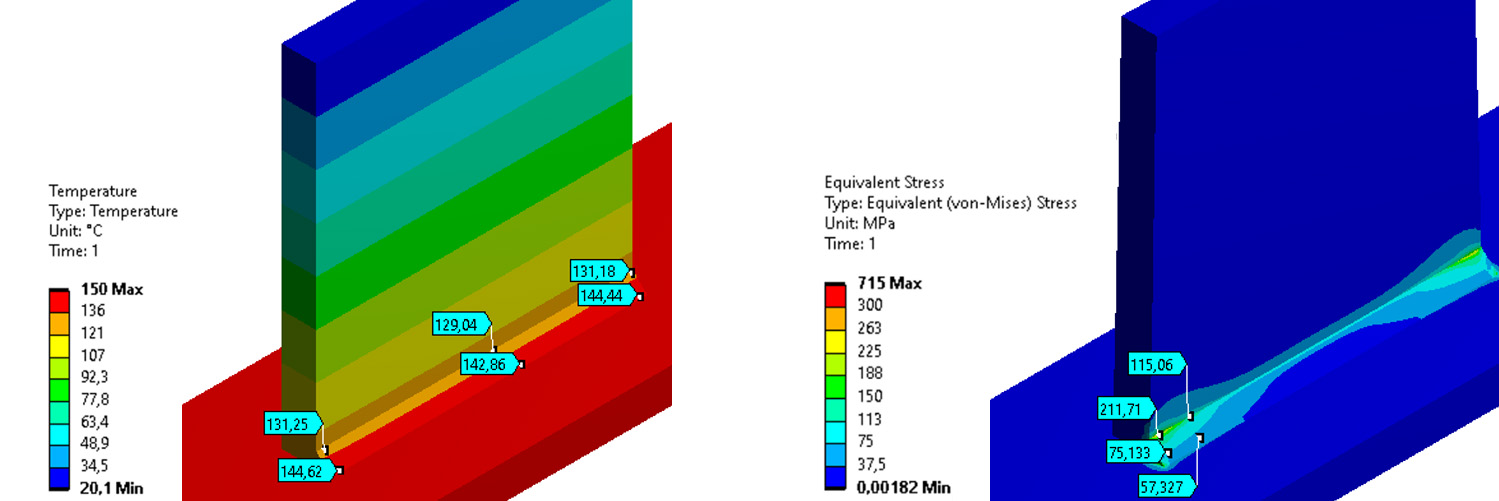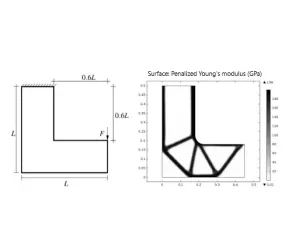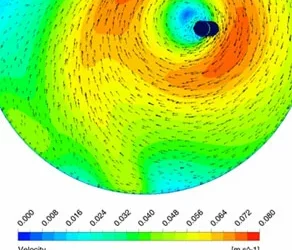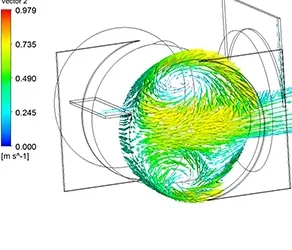Thermal simulation is utilized in the determination of temperature distribution, thermal conduction/flow. This is relevant for e.g. electronical devices and circuits, steel structures, heat exchangers, heat pumps as well as gases and fluids. We primarily use ANSYS for thermal calculation.
The thermal analysis can include radiation, convection and thermal conduction besides the insulating layers in the form of heating resistance.
The thermal model can either be connected to CFD (Computational Fluid Dynamics) analysis or a structural analysis (typical finite element analysis, FEA).
An essential advantage of simulation is the achievement of large savings for experimental setups, prototypes and laboratory testing. Furthermore, simulation can be utilized for visualization of temperature distribution, thermal conduction and its effect.
The heat pump cools down the suction air before it is blown out again. The air mixture is critical as regards COP (coefficient of performance), recirculation, surrounding buildings, adjacent housing, roads, etc. In this connection, is may also be worth checking whether the air is blown up or down to ensure that the plant will not lead to cold zones in residential areas, to the annoyance of the residents – or across roads resulting in even colder roads locally. Likewise, individual fan curves can be connected as well. Thus, their lost effect based on the back pressure is taken into account.
The thermal analysis is connected to a CFD analysis where the air flow is analyzed together with the thermal exchange in the air. Relevant results, such as mixture, potential recirculation, pressure field, fan performance, etc. can subsequently be visualized in further analyses in terms of COP value and design.
Thermally loaded weldings
The thermal energy typically affects the entire structure, which can lead to a variable temperature over the welding. The results from the thermal model are connected to a structural analysis where it shows that the irregular thermal expansion leads to tensions in the welding. These tensions can turn out to be decisive for the ultimate stress at capacity loads or reduced service life in terms of fatigue. Depending on the size of the temperature in question, the change of material properties, such as creep, rigidity, flow and breaking stress can be relevant as well.
Thus, thermal analyses can be utilized to understand and visualize the temperature field in the entire structure, which can subsequently be used as a basis for the structural model where the structure is verified as regards the temperature load, combined with other loads applied to the structure.
Thermal simulation and analysis ensure that the design is verified and will work as intended despite surroundings with strongly varying temperatures. The development work can lead to large savings as varying temperatures are often difficult to create realistically with tests. It will often save you time as well because the creation of varying temperatures is very time-consuming.
Of course, we are all up to date within the thermal field, and we only apply leading calculation and simulation tools.






